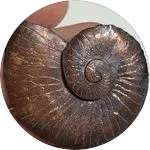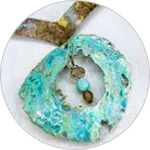
Most probably you have already found green and white sea glass pieces. But besides these common colours there are a lot of other shades and tones of sea glass. The colours and rarity depend on the region where they are found, some areas have more blues and even red ones, on other areas these colours can be considered extremely rare. And the rarest of all is black sea glass, which actually a very dark green that appears black, an its green tones can be seen only when lit through by some bright light. And one more interesting fact about pale lavender colour: most of the lavender pieces were originally started as clear glass, that had a manganese content, and when they were permanently exposed to UV rays, they slowly turned into a pale lavender or amethyst colour.
Here we made a list of the colours and rarity of sea glass pieces at the coastline of the Maltese Islands
MOST COMMON:
kelly green, brown, white, clear
These colors mostly come from glass bottles used by companies that sell beer, wine, juices, soft drinks, and other beverages, clear plates and drinking glasses, or windows and chandeliers (rare).

LESS COMMON:
jade, amber, golden amber, lime green, forest green, ice blue or soft blue
Rarity: 1:25-100
They come from bottles for whiskey, spirits, medicine, early bleach bottles, soda bottles from the 1960s, ink bottles.

UNCOMMON:
seafoam green, soft green
Rarity: 1:50-100
They mostly come from early to mid-1900s Cola bottles and beer bottles.

RARE:
purple, citron, opaque white, cobalt blue, cornflower blue, aqua
Rarity: 1:200-1000
They originate from milk bottles (opaque white), medicine bottles, poison bottles, artworks (blues), and glass bottles from the 19th century (aqua).

EXTREMELY RARE:
grey, pink, teal, turquoise, red, yellow
Rarity: 1:1000-5000
These originate from dinnerware, decoration glasses, medicine containers, art glass, beer or spirit bottles, boat lights

RAREST:
black (a very dark olive green that seems to be black),
orange
Rarity: 1:10000
Black glass pieces are quite old, originating from thick eighteenth-century gin, beer, and wine bottles. Orange pieces mostly come from the early 19th, from decorative glasses and tableware.

FOLLOW US ON
Art of Nature | Contemporary Jewellery
@artofnaturejewellery










